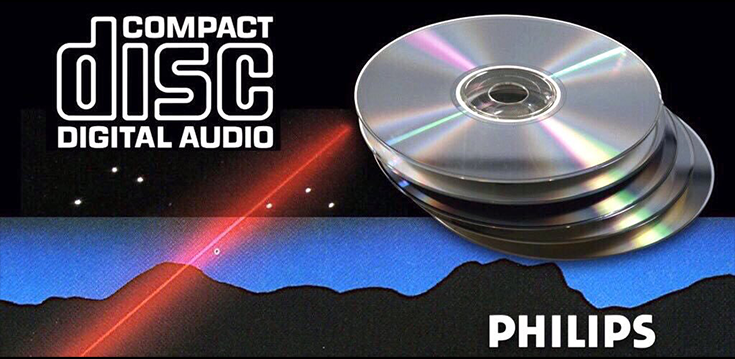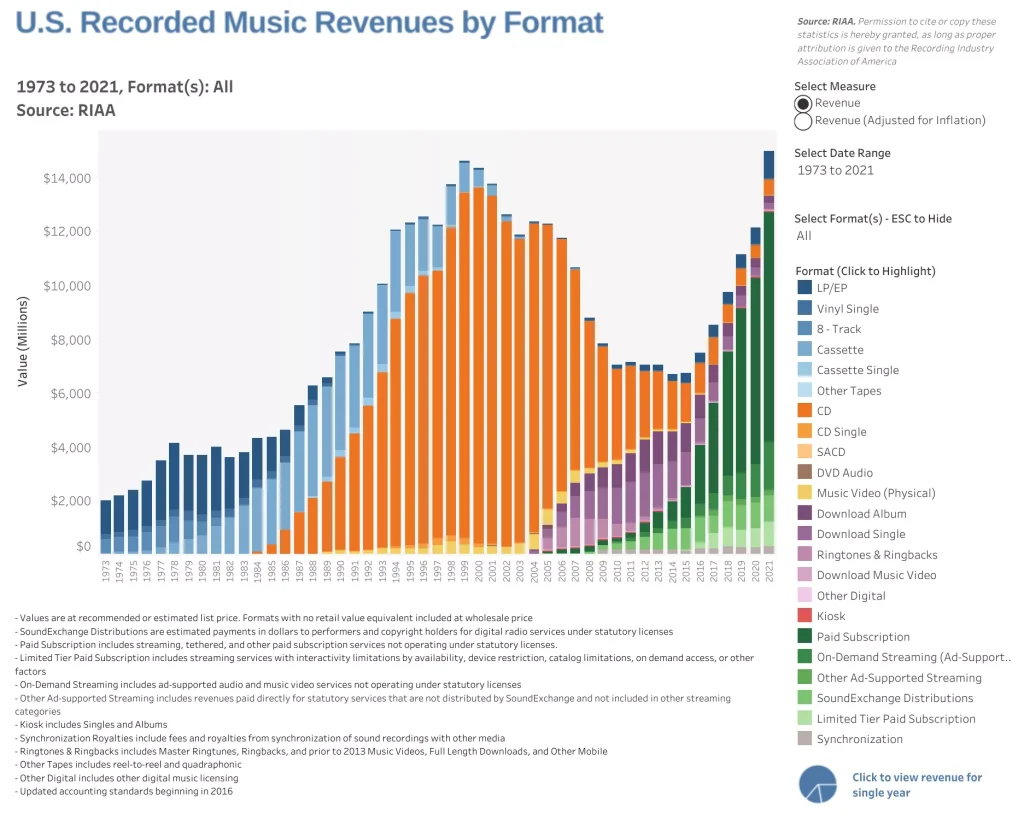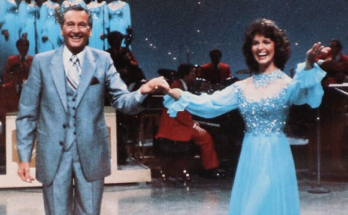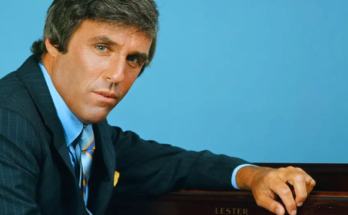
Looking back on the 1980s today, the first thing I remember is the gleam of it all — the sterile, sleek sheen of a bold new pink-and-turquoise-hued future, molded in plastic and trimmed with the flimsiest film of mylar, meant to imitate the cold, clean glint of real metal, but at one-tenth both the weight and cost. The organic was out, the synthetic was in. Reagan brought Star Wars to life with his proposed missile defense system, faux computer-generated TV host Max Headroom hawked New Coke in TV ads, and it seemed like every movie was set in the bland suburban nowheresville that was Shermer, Illinois.
So if there was ever going to be a time in which shimmering, space-age digital audio would become everyday household technology, this was it. No more tape hiss from cassettes! No more awkward clunks and pauses from eight-track cartridges! No more skips, crackles and pops from your venerable old vinyl records! Nothing at all to remind you that music comes from any tangible object! With the debut of the compact disc in October 1982, tunes magically manifested themselves out of the aether itself, unsullied by any evidence whatsoever of having ever interacted with the physical world.
This radical new invention would, of course, send shockwaves through world music culture, and the retail business behind it, changing the game forever — but it wasn’t something that happened overnight.
The idea wasn’t really even new in 1982. The concept of storing media optically on a circle of plastic went back to at least the 1950s, when a primordial video disc was demonstrated at a major industrial exposition, the Salone Internazionale della Tecnica in Turin, drawing much attention. A dozen years later the innovative Dutch electronics giant Philips earnestly set off to further develop this technology down three parallel avenues: using optical discs to store audio, video and computer data. By 1976 it was made public that Sony was working along similar lines, and it was something of a shock when these two heavyhitter competitors announced in 1978 that they intended to work jointly on a standardized optical disc music system. They co-published the famous Red Book in 1980, detailing every technical specification of the CD medium, and while Sony worked out the mechanicals and circuitry of the players, Philips masterminded the design and manufacture of the discs themselves.
After much discussion in the audiophile press (and countless glowing PR pieces on television stations around the world), Sony dropped the CDP-101 compact disc player. And though the first commercial CD to be physically pressed was an ABBA album, the Swede popmeisters were beaten to the marketplace by Sony’s dump of 50 CD titles all at once in October, 1982. Because it was the first listed by “pop” catalog number, Billy Joel’s 52nd Street is often counted as being the first CD ever released.
The usual early adopters ran out to buy players as soon as they were available, but the rollout was slow, starting in Japan only, then spreading to Europe and America the next year. By this time, Philips was offering a player of its own, too, and many more titles were becoming available on CD — both old catalog items and new releases. Still the US didn’t see the release of a CD manufactured specifically for its domestic market until September, 1984, when the brand-new Sony/CBS plant at Terre Haute, Indiana ran its first batch of Born in the USA discs.
For a while nobody was sure the new format would take off. This was the era in which Sony’s Betamax videotape was still fighting a losing battle for dominance against the more generic VHS format. What if I buy one of these players and then some other format comes out and kills this one? Vinyl sales were still strong, though cassettes were by then claiming a big chunk of the LP’s traditional share of the market. People were hesitant to consider replacing their long-held collections, especially when the new discs were more expensive, and the selection of material still comparatively slim. Plus that tiny cover art! Not to mention that car players were just now starting to appear — and they were not very good yet, still prone to skipping over the slightest bumps in the road. How exactly is this better? Americans needed somebody to show them why they should make the switch.
And however improbably, that person turned out to be Mark Knopfler.
For those who do not remember the summer of 1985, here’s what was in the movie theaters: The Goonies, Cocoon, St. Elmo’s Fire, Back to the Future, Weird Science, Real Genius, Pee-wee’s Big Adventure. Here’s what was in the headlines: President Reagan attends a funeral in a Nazi graveyard, Philadelphia cops kill 61 civilians when they firebomb a city block, the Space Shuttle Discovery makes its first successful flight, French spies bomb and sink Greenpeace’s ship Rainbow Warrior, the wreck of the Titanic is discovered, the Night Stalker is captured. And here’s what was on the radio:
It might have been the summer of Live Aid, but Dire Straits stole the whole year with the release of their album Brothers in Arms. The band’s label made a huge promotional push for the album, focusing on the fact that it was among the first releases to be completely recorded, mixed and issued in digital form. And when the “Money for Nothing” video dropped — with MTV playing it practically every hour and a half for what seemed like months — sales shot through the roof. Brothers in Arms was the first album to sell one million copies in CD format, and it would go on to sell 30 million total copies worldwide. It remains today the eighth biggest-selling album in UK history.
By the end of 1985, practically every audio equipment manufacturer offered its own CD player. The Sony Discman portable player slowly started shoving the trusty old cassette Walkman out of the limelight, car players improved bit by bit, and lower-end tech companies issued inexpensive models that put digital audio closer to the reach of the average music lover. In 1986, CD sales very nearly equaled those of vinyl LPs; in 1987, they handily trounced the old format. The compact disc would continue to outsell the long-playing record every year until 2020. (More on that later.)

I myself was a Gen X teen at this time, content with my tapes and records, and unable to afford such hifalutin biz anyway. The first time I laid eyes on a CD, it was at my great-uncle’s house in Oklahoma City. My grandmother’s brother Clyde was a long-established audiophile and tech buff, and he was crazy about big band music; he bought a player and started stockpiling a catalog of discs practically as soon as they hit the market. I remember him earnestly showing me his system when we visited circa 1985 or so; he put on some modern swing recording and cranked it up loud. He stood with his arms across his chest, his tobacco pipe in one hand, eyes squinted, a thin smile on his lips, letting the horns honk all over him in sheer joy. I wasn’t familiar with the band he was playing, but had to admit it really did sound pretty great.
Among my crew of teenage nerds, it was my buddy John B that got a CD player first — a boombox that had the ability to record a disc to cassette, which I naturally thought was cool, as we were all in the habit of making mixtapes of our (and one another’s) cassettes and records. Now I could conceivably buy a copy of a new album on CD, have John dump it onto a cassette for me, and still have the original digital copy if the tape got eaten or lost. Plus you could usually fit two entire albums onto a single 90- or 120-minute cassette, often having spare room for more music at the end of each side.
Being a longtime member of the Columbia House Record & Tape Club, I had many of their cassette releases in my collection. Somewhere in the middle of 1986, I made my first selections in CD format: Peter Gabriel’s So and Robert Palmer’s Riptide. When they showed up in the mail, I opened the jewelcases and removed the liners and inspected every millimeter of the packaging, the artwork, the card under the tray, both sides of the disc itself. I had read that CDs play from the inside out, rather than outside in like a vinyl record, and I could tell where the music ended on these by looking at their shiny backsides. This was truly some Star Trek shit. But, as I did not yet have a way to play them, I asked John to tape them for me onto a cassette, and he did. I didn’t buy any more for a while.
In 1988 I was 19 and preparing to move from my small rural hometown to the nearest big city, Wichita, to attend WSU. I had already spent my first year out of high school at my local community college and was getting antsy to split the scene. My friend Alan came by that summer with a tape he had made of WSU’s late-night college radio show — a tape which led me to start tuning into that theretofore-unknown spot on the dial, revolutionizing my musical life night after night with sounds I could not have conceived before. I noted that several songs in rotation on the station were from a Homestead Records compilation called Human Music, and I called the hipster record store in Wichita to see if they had the CD. I was in luck! They held it for me until I drove up for college orientation a few days later, and when I fetched it, I held it in my hands like a holy object.
Back home in Dullsville, John dutifully taped it for me, and when he gave me back the CD and the resulting cassette, he made kind of a stink face. “Some of this is kinda cool,” he said. “But a lot of it is just too much. It’s weird.”
I still didn’t have a CD player of my own when I moved away that fall; the sound system I took with me to the dorm was comprised of the record player and amp circuitry from an old giant console stereo, mounted in a cardboard box, with a pair of pretty kickin’ old wooden house speakers, maybe JVCs? It was a loud and warm-sounding rig, despite looking like something a hobo might have cobbled together in a makeshift hovel. A few months later I dropped out of school and ended up sharing an apartment suite with my suitemate from the dorms, in a dilapidated apartment building just catercorner across campus. He had a very fine component stereo — with compact disc player — and even had a CD player in his brand-new Ford Probe.
Suddenly everything was digital. I remember getting so sick of hearing INXS’ Kick album that I threw my CD copy out the sixth-floor window of my apartment.
That next summer, some of my friends figured out a lucrative way to make extra beer money. They signed up repeatedly for both the Columbia House and BMG record clubs, using different fake names each time, taking advantage of the introductory special — something like 11 CDs for a penny. Then they would turn around and sell these brand-new CDs to local music stores for resale. They had a pile of subscriptions going to the same address under names like Henry P. Rollins and Johnny Laundry, and nobody at the record clubs ever seemed to notice.
Through the ’90s I bought almost all new music on CD, but continued making cassette mixtapes of songs from both CDs and vinyl. Most of the older vehicles I drove then were frozen in cassette-deck era amber and it was nice to have something to listen to besides the radio. When my own bands went into the studio and recorded albums, we released them exclusively on cassette, too, as having CDs made was still prohibitively costly at the time.
The ’00s finally brought down the price of CD burners to practically nothing, allowing anybody to create their own discs — finally doing the one thing that had kept the cassette in play for so long. The word “mixtape” would never again refer explicitly to a tape. Additionally, now a person could go on a file-sharing service such as Napster (or Limewire or Soulseek) and gorge themselves like a tick on free pirated mp3 files, then burn them to discs all day long. A lot of folks started seeing music as free, and stopped buying it altogether, spending their music budget only on blank CD-Rs. The mighty compact disc was evolving, but in doing so was contributing to a slump in legitimate retail sales of new music. Revenue across the entire industry plummeted — in every format.
To add insult to injury, the CD took another lump in 2008, when vinyl record sales — long since consigned to ancient history — unexpectedly sprang back to life. Sales of music on vinyl has increased every year since.
And then came the era of personal digital music players like the iPod, and the smartphone. Buying music by download — paying for a digital file, with no physical medium involved — started slowly in around 2004, but by 2011 it tied, then passed, CD sales for the next five years. By 2016, subscription services like Spotify, Pandora and Apple Music made up the lion’s share of revenue in the music biz, with the CD taking a smaller and smaller piece of the pie with each passing year. In 2020, the vinyl revival finally caught up with compact discs, and last year, eclipsed them. But even combined, the amount of cash spent on physical media made up less than one-sixth of total sales in 2021.

So here we are in 2022, a full 40 years down the line from digital ground zero, and witnessing the curious rebirth of not just vinyl but cassette tapes as viable and increasingly popular music formats. Younger folks who spent their formative years “in the cloud” — less in touch with traditional physical media — find value in the very tangible objects from which the engineers of the digital age tried to free us. There is joy in the tactile, in the interaction with an object, be it disc or LP or cassette or magazine or book. Putting on some music is a holy thing, and it feels good. No wonder it came back.
Plus there’s a certain satisfaction in knowing you will not wake up one morning to find your vinyl collection deleted by some tech company, too.
Here are some remembrances of the dawn of the compact disc era from other folks who were there. Please feel free to leave your own in the comments section below!
CHRISTOPHER, 54, UNION CITY, NEW JERSEY
FIRST CD: 99% positive that….the answer is 1984. The first CD that I heard was definitely at John Benedict’s moms house. He was the first of us to buy a player in maybe 84-5. The first CD he played I’m thinking was Rhino’s The Turtles – Greatest Hits.
FIRST IMPRESSIONS: My early impressions of compact discs were on the negative side, with exceptions. The modern stuff I dug sounded good enough, but I thought it sounded disgracefully anemic. In 1987 the first CD I bought was the excellent 2-CD Jefferson Airplane compilation 2400 Fulton St. because someone marked the 30 buck double set as single CD price 15. I still did not have a player, having been miffed by the sonics on the 1987 Fabs CDs thus far and sarcastically telling everyone I would have no choice soon, eh? I did literally have a plan to buy one when Pepper came out. And I did. Long story short: I worked at record stores 1986-89, and after buying a CD player in 1987, would usually try to buy both the vinyl and the CD of what I was into. I would say that it was the industry at large that pushed me pretty much all to CDs on new releases by 89-90.
LATER ON: I listen to CDs rather infrequently at the moment. When a Beatles set comes out I blast it out back, but the main CD collection gets limited play overall. I would say the CDs that have got the most play from me for the last several years are CD-Rs of rare shit that I burned for myself ages ago.
JODY, 51, KANSAS CITY, MISSOURI
FIRST IMPRESSIONS: In 1982, I lived in Wichita and was 11 years old. I was fortunate to have an uncle that lived in the Dallas-Fort Worth area who I visited consistently and frequently, and he was a huge audio visual nerd and also wealthy enough to afford the cool toys. When it came to home entertainment, this guy was in a league of his own. He had introduced me to Laser Disc movies, Betamax and VHS, etc. But I remember seeing and hearing a CD at his home that Christmas and it was pretty amazing. Unfortunately, the music playing was traditional Christmas tunes sung by some mediocre pop stars trying to make a quick buck. So the inaugural experience let’s just say was lackluster in content, but definitely cool to see that shiny little disc.
FIRST CD: For the next few years, I — like most middle class teenagers — was not just content but still head over heels for my dual cassette and turntable stereo. I mean most of us were just starting to have a somewhat respectable library of music. But I do remember the first CD I bought and have purchased on almost every platform since. It was the Beastie Boys’ Licensed to Ill in 1988. I did not own a player and had to listen to it on wealthier and hipper friends’ stereos for awhile. It wouldn’t be until my late teens that I would own a CD player.
PAT, 61, NEW YORK CITY
FIRST IMPRESSIONS: I moved to NYC in 1979. I started listening to other people’s CDs around 1990, I think. I’d already seen eight-tracks come and go… I was a skeptic and I was way into making mixtapes and collecting vinyl. Throughout the 80s, I managed to not even buy any sort of stereo system, I just always had cool roommates who let me use theirs.
FIRST CD: In 1990 I got my own place in Brooklyn, so I had to buy hifi components. I bought a turntable, a tape deck and a set of speakers. My then boyfriend donated the receiver. That year I did artwork that ended up on vinyl AND CDs, so I just gave the cds away and kept the vinyl. In late 1991 L7 asked me to do a cartoon for Bricks Are Heavy, and they sent me the CD but not the vinyl… so I purchased a CD player component to add to my stack.
LATER ON: Of course, the CD player busted before any of the other components did (around 2004, I think it lasted 15 years). I never bought cassettes except for blank ones, to make mixtapes, and I preferred the warm sound of vinyl over the CDs. What was also annoying when deejaying live or mixing tapes, was CDs were always mixed way different — louder — than vinyl, so you always had to feck around with levels when adding CDs into your soundscapes. No, I never fully switched to CDs, and predicted musos who did so would be sorry. I did also buy blank CDs to mix my own playlists. Different neighborhoods I travelled in, people would tie up and put out in the trash armloads of records — which they’d replaced, I suppose, with CDs. That was where I’d step in. I’d grab all the vinyl and sort it later. I still listen to CDs while I’m working, because you don’t have to get up and turn them over — and there’s plenty of excellent sounds I have on CD that I don’t have also on vinyl.
PAUL, 43, WICHITA, KANSAS
FIRST CD: 1991. I bought my first CD player, along with a copy of AC/DC’s Back in Black.
FIRST IMPRESSIONS: I’d spent my life buying cassettes (and occasionally LPs) until my first CD player. The sound absolutely amazed me. It was so perfect in comparison to my cheap Walkmans, cassette players, and record players. It was weird at first to have the freedom of picking a track to listen to at will, as well as instead of picking up where I left off, having to cue up the track I stopped at.
Although the sound quality was great, the reliability of my early CD player nearly killed the buzz for me; to this day, nothing will piss me off more than a skipping disc, or one that will not start at all (this happened a lot with my first unit). This didn’t deter me too much, as I faithfully spent my monthly paper route income on new CDs for years. Eventually, my love for vinyl prevailed (along with increased income), and I switched back to predominantly buying records.
LATER ON: I still have a CD collection, and still listen to them every so often.
DANIEL, 50, HENNESSEY, OKLAHOMA.
FIRST CD: The first CDs I bought were the first I heard. I remember reading about and seeing CDs in the store and hearing about how wonderful the audio was. I saved my money and I believe I bought my CD deck at Sears for something like $200 — which was so much money then. This was in the mall in Enid, Oklahoma. I then proceeded straight to the record store in the mall (I think Hastings) and bought two CDs —the Tom Tom Club album and Talking Heads’ Remain in Light.
FIRST IMPRESSIONS: I remember how good it all sounded even on my crappy console system I had bought at some pawn shop. The thing had an 8 track player. I also remember the CDs costing a crazy $14 each — which was twice what I was paying for cassettes. I don’t remember the next CD I bought but I literally still have that Talking Heads CD. I kept buying cassettes because they where cheap and if I found something I really liked I would then go get it on CD. I basically did that until I went to college in ’91.I do remember that I thought it was weird that there was no side A and side B anymore. I had been so programmed by records and cassettes that each side of the album was its own thing, it was weird when all the tracks just ran straight through.



